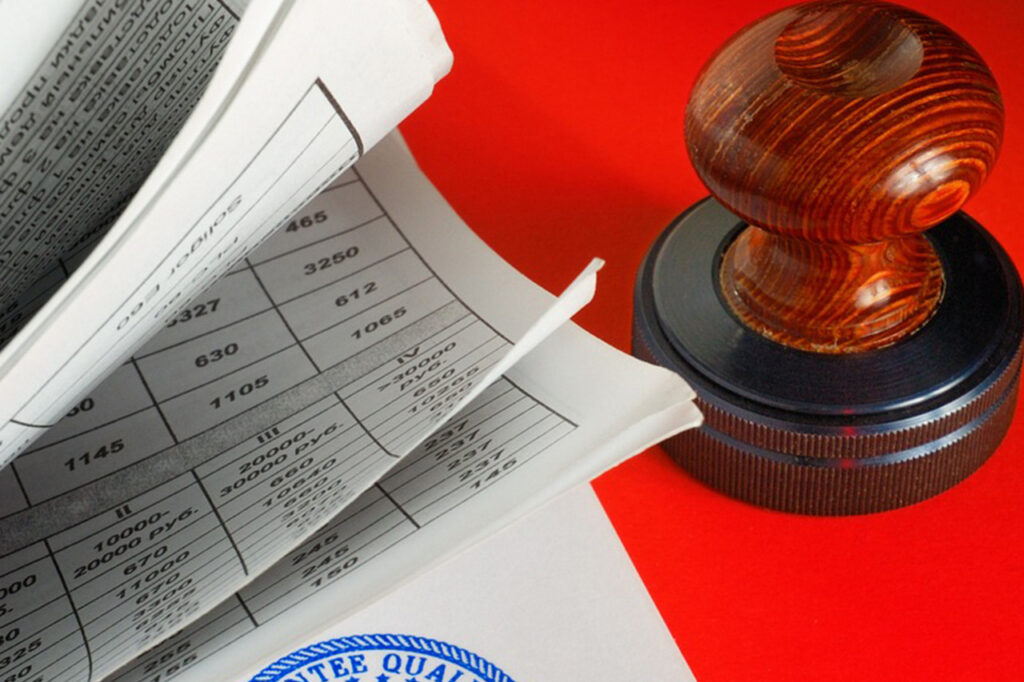So you have got everything set to construct your new metal barn: you have the materials, you have contracted your contractor, and you have your property all set. But, do you have your permits?
Zoning laws are municipal or local regulations that dictate how land within specific areas can be used. These laws classify land into zones such as residential, commercial, industrial, or agricultural, each with its own set of permitted structures and uses.
Before constructing a metal barn, it is crucial to determine the zoning classification of your property to ensure that such a structure is allowed.
In addition to the type of structures permitted, zoning laws often specify requirements like building height restrictions, setback distances from property lines, and the percentage of land that can be covered by structures. Understanding these regulations helps in designing a barn that complies with local ordinances, thereby avoiding potential legal issues or the need for costly modifications.
The Importance of Building Codes
Building codes are standardized sets of regulations established to safeguard the safety, health, and general welfare of those who live in or use buildings. These codes govern key aspects of construction such as structural integrity, fire protection, sanitation, energy efficiency, and accessibility for individuals with disabilities. When constructing a metal barn, adherence to these codes is essential. They act as the baseline standards that ensure buildings are safe, durable, and suitable for their intended use.
These regulations are not arbitrary. They are based on years of research, real-world case studies, and engineering best practices. Building codes take into account local conditions such as climate, topography, and the likelihood of natural events like hurricanes, earthquakes, or heavy snowfall. Following them means using approved materials, proven construction techniques, and architectural designs that can handle environmental challenges. This is particularly important for metal barns, which may serve multiple purposes ranging from equipment storage to livestock housing.
Noncompliance with building codes can have serious consequences. Property owners may face fines, legal liabilities, or stop-work orders. In severe cases, they could be forced to tear down or significantly modify the non-compliant structure, leading to wasted time and additional expenses. Even if not caught by inspectors, ignoring codes can jeopardize the building’s integrity and put occupants or stored materials at risk. This makes full compliance not just a legal responsibility but also a practical necessity.
Navigating the Permitting Process
Before construction begins, obtaining the necessary permits is a crucial legal step that cannot be overlooked. The permitting process is in place to ensure that the proposed building aligns with local building codes, zoning laws, and environmental regulations. Typically, this process involves submitting comprehensive plans that detail every aspect of the intended build. These documents may include site layouts, structural blueprints, and specifications for electrical, plumbing, and mechanical systems if they are part of the barn’s design.
Once submitted, these plans are reviewed by local building authorities or planning departments. The review process ensures that the proposed structure will be safe, environmentally sound, and properly situated on the chosen site. During this time, officials may request revisions or additional documentation to ensure that the barn meets all applicable regulations. After initial approval, inspections may be required at various stages of the project, such as foundation laying, framing, and final completion, to confirm that the construction follows the approved plans.
Obtaining permits might seem like a bureaucratic hurdle, but it plays a vital role in protecting the property owner and the community. Permits provide a documented assurance that the structure is built to code and will not pose risks to neighboring properties or the environment. In the long run, having all required permits and inspection records can make it easier to sell the property, secure insurance, or apply for loans. Engaging with your local building department early can help clarify requirements and avoid costly delays.
Site Selection and Preparation
Choosing the right location for a metal barn involves more than simply identifying a vacant plot of land. Site selection should be guided by practical and environmental considerations that impact both short-term functionality and long-term structural health. Factors such as elevation, slope, drainage capability, and soil composition must be assessed before any building activity begins. Placing a barn in a low-lying area with poor drainage, for example, could result in flooding, erosion, or foundational damage.
Accessibility is another key factor in site selection. The barn should be conveniently located in relation to other structures on the property and easily reachable by roads or driveways for vehicles and equipment. Consideration should also be given to how prevailing winds, sun exposure, and natural shading will affect the internal climate of the barn. In some cases, local regulations may also dictate minimum distances from property lines, utilities, or protected natural areas, making it important to conduct a thorough site assessment.
Once a site is chosen, preparation work begins. This includes clearing vegetation, removing large rocks or debris, and grading the land to create a level building surface. Soil tests may be conducted to confirm that the ground can support the weight of the barn, especially if it will house heavy machinery or livestock. Investing time and resources into proper site preparation ensures that the foundation remains stable and reduces the risk of future issues such as settling, cracking, or water intrusion. This groundwork is an essential part of a successful barn construction project.
Understanding Load Requirements and Structural Integrity
When planning a metal barn, one of the most critical design considerations is the building’s ability to handle various load types. These include dead loads, which refer to the weight of the building materials themselves; live loads, such as occupants, vehicles, equipment, or livestock; and environmental loads like wind pressure, snow accumulation, or seismic activity. Local building codes typically define the minimum load requirements based on regional risks, making it essential to tailor the design accordingly.
Meeting these load requirements involves more than just using strong materials. The entire structural system must work cohesively to distribute weight and resist forces without compromising the barn’s integrity. This includes designing trusses, columns, and connections to handle the expected stress loads. In areas prone to high winds or heavy snowfall, reinforcements such as additional bracing or deeper foundations may be required. Attention to detail during this phase ensures that the barn remains safe and operational throughout its intended lifespan.
Consulting with a structural engineer is often a wise investment. These professionals can analyze the unique needs of your location and help create a design that complies with local codes while maximizing efficiency and safety. Their expertise can help avoid overbuilding, which wastes resources, or underbuilding, which compromises safety. In the end, a well-designed barn will not only stand up to daily use but also provide peace of mind during extreme weather conditions. Structural integrity should never be left to chance when building with metal.
Fire Safety and Egress Considerations
Fire safety is a critical aspect of building design. Building codes require that structures have adequate means of egress, fire-resistant materials, and possibly fire suppression systems, depending on the building’s size and use. For metal barns used to store flammable materials or house animals, these considerations become even more important.
Incorporating fire-resistant insulation, ensuring clear exit paths, and installing fire extinguishers or sprinkler systems can enhance safety. Compliance with fire safety codes not only protects property and occupants but may also influence insurance premiums and liability.
Electrical and Plumbing Installations
If your metal barn includes electrical or plumbing systems, these installations must comply with respective codes. Electrical codes govern aspects such as wiring methods, circuit protection, and grounding, while plumbing codes address pipe materials, fixture placements, and waste disposal.
Hiring licensed professionals for these installations ensures that the work meets code requirements and passes necessary inspections. Properly installed systems enhance the functionality of the barn and contribute to overall safety.
Accessibility and Universal Design
Accessibility codes ensure that buildings are usable by individuals with disabilities. While not all barns are required to meet these standards, incorporating universal design principles can be beneficial, especially if the barn is intended for public use or employment purposes.
Features such as wider doorways, ramps, and accessible restrooms make the barn more inclusive and may be required under certain circumstances. Consulting with local authorities can clarify whether accessibility codes apply to your project.
Environmental and Energy Efficiency Regulations
Environmental regulations may impact barn construction, particularly concerning stormwater management, erosion control, and energy efficiency. Building codes increasingly incorporate energy conservation measures, requiring insulation, efficient lighting, and possibly renewable energy sources.
Compliance with these regulations not only meets legal requirements but also reduces operational costs and environmental impact. In some cases, incentives or rebates may be available for implementing energy-efficient designs.
Insurance and Liability Considerations
Constructing a metal barn involves financial investment and potential risks. Obtaining appropriate insurance coverage protects against losses due to accidents, natural disasters, or other unforeseen events. Insurance providers often require proof of code compliance and may conduct their own inspections.
Ensuring that all aspects of the barn, from design to construction, adhere to regulations can facilitate the insurance process and provide financial protection. Additionally, maintaining records of permits, inspections, and compliance documents is advisable.
Working with Professionals
Engaging professionals such as architects, engineers, and contractors experienced in metal barn construction can streamline the process. These experts understand local codes, can assist with permit applications, and ensure that the design and construction meet all requirements.
Collaborating with knowledgeable professionals reduces the likelihood of errors, delays, and non-compliance issues. Their expertise contributes to a successful project that meets your needs and adheres to all legal standards.
Conclusion
Installing a metal barn involves more than assembling a structure; it requires careful planning, understanding of local zoning laws, adherence to building codes, and coordination with various professionals. By thoroughly researching and complying with all regulations, you can ensure a smooth construction process and a safe, functional barn that serves your purposes for years to come.

